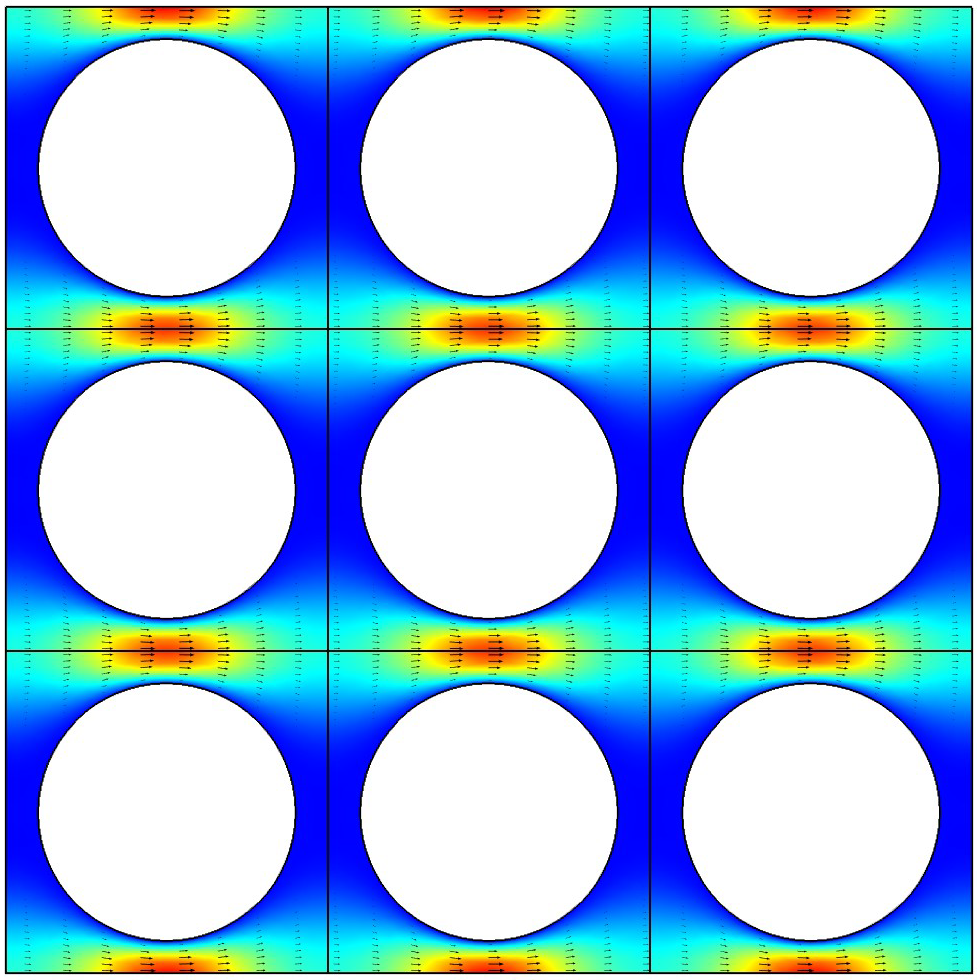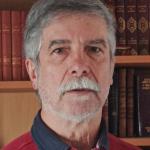Heat Transfer In Porous Media: Various Models From A Multi-Scale Perspective
Heat transfer in porous media is a typical example of complex multi-scale problem with multiphase aspects, potential for local non-equilibrium behaviors, strong coupling with other transport mechanisms (multiphase flow, dispersion, reaction, …). Applications are found in many different areas, bringing also a large spectrum of characteristic spatial and time scales: chemical engineering, nuclear engineering, petroleum engineering, geothermal resources, composite materials, ablative layers in aerospace industry, drying and food engineering, cryogenic engineering, to name a few. As a consequence of this diversity, various models may be developed to handle local equilibirum or local non-equilibrium flows and the different couplings. In the first part, the course objective is to give an advanced presentation of the various models for the simple case of one-phase flow in a porous medium: 1 to N-equation models, hybrid or mixed models, with indications on how to calculate or estimate effective properties. In the second part of the course, additional problems will be dealt with: weak couplings, interfacial thermal resistance, homogeneous and heterogeneous heat sources, coupling with dispersion (Soret effect) and strong couplings (combustion, pyrolysis), phase change (drying, boiling). The lectures will be illustrated by examples coming from the various applications cited above.
Please note that course access links and materials will be sent via email once payment is received. Links to watch the courses will be activated for you for 60 days. If you have paid for this course and have not received this information within 1-2 business days, please contact margaret.dieter@interpore.org.
Lecturer:
Prof. Michel Quintard, Institut de Mécanique des Fluides de Toulouse, France
Course registration for recorded short course:
Interpore members: 50€ students, 75€ academic, 150€ industry
Interpore non-members: 62.50€ students, 80€ academic, 150€ industry
Please note that course access links and materials will be sent via email once payment is received. Links to watch the courses will be activated for you for 60 days. If you have paid for this course and have not received this information within 1-2 business days, please contact margaret.dieter@interpore.org.
Learning Objectives:
Short course includes 12 hours of lectures in four days.
Lecture 1 (3 hrs):
- One-phase flow and heat transfer: a multi-scale perspective
- A review of applications and the related problems
- Introduction to multi-scale analysis: objectives, diversity of approaches
- The case of diffusion in a heterogeneous medium, continuous conductivity, local equilibrium: a simple treatment through spatial averaging, asymptotic homogenization, closure, applications to periodic and non-periodic media (e.g. tomographic images)
- Tools for upscaling through volume averaging (averaging theorems, kernels for generalized averaging, approximations in the upscaling problems)
- Pore-scale problem
- Decoupling between momentum and energy balance equations: a brief overview of macro-scale models for momentum balance equations
- Coupled pore-scale/macro-scale problems for the energy equations
- 1-equation local equilibrium model, effective thermal diffusion, thermal dispersion, examples, bounds
Lecture 2 (3 hrs):
- One-phase flow and heat transfer: local non-equilibrium models
- 2-equation local non-equilibrium model: generalized case (e.g. with time convolutions)
- 2-equation local non-equilibrium model, first order: discussion on the effective thermal dispersion tensors and exchange term
- Mixed or Hybrid model: averaged equation for one-phase coupled with pore-scale model for the other phase (applicability, advantages and drawbacks as compared to N-equation models)
- Improved discussion on exchange terms
- N-equations models, phase splitting (geometrically based or based on eigenvalue problems)
- Asymptotic behavior of 2-equation models, 1-equation non-equilibrium model
- Discussion: applicability of various models, transitions
Lecture 3 (3 hrs):
- Additional heat transfer problems
- Weak coupling (e.g., non-linear properties)
- One-way coupling: example for Soret effect
- Effect of interfacial thermal resistance
- Homogeneous and heterogeneous heat sources: impact on macro-scale models (examples from stratified media, unconsolidated media, N-particles clouds)
- Phase change, drying: equilibrium and non-equilibrium models, examples from waste storage, compost, …
- Phase change, boiling: phenomenology (impact of porous medium on critical fluxes), macro-scale models, further discussion on models for two-phase flow in highly permeable media, examples from nuclear engineering and nuclear safety
Lecture 4 (3 hrs):
- Reactive heat transfer and other problems
- Reactive heat transfer: strong coupling, example of Arrhenius reactive term
- Reactive heat transfer: case of in-situ combustion, pyrolysis
- Ablative layers: ablation basics, example of local non-equilibrium models
- Ablative layers: the concept of effective surface (models without ablation, impact of surface recession)
- Additional problems: simple introduction on radiative heat transfer, cryogenic engineering
- A sequential upscaling perspective: pore-scale → Darcy-scale → Large-Scales, the case of effective thermal conductivity, the case of exchange coefficients


